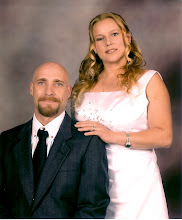"Over the past five hundred years, Latin America has experienced approximately three or four periods of colonization. The first period began with Christopher Columbus's arrival in the Americas in October 1492, launching three centuries of Spanish, Portuguese, and British colonial control over the hemisphere, with the French, Dutch, Danish, and other European powers competing for slices of the action in the Caribbean. In most of Latin America, this period came to an end with the wars of independence from about 1810 to 1825. Political independence ushered in a second period (known as neocolonialism), in which the countries of Latin America were still subject to foreign economic control—this time largely by the British. During the third period, corresponding to the twentieth century, this economic dependency shifted from the British to the United States, and anticolonial responses increasingly assumed anti-imperialistic characteristics. The twenty-first century arguably introduced a fourth period of neocolonialism, in which Latin America has become subject to control through the maquiladora system to transnational capital not necessarily rooted in one country and in which the export commodity is labor rather than raw materials."
http://science.jrank.org/pages/7491/Anticolonialism-in-Latin-America.html"Miguel Hidalgo led the successful independence movement of Mexico. Simón Bolívar helped in a number of revolutions in northern South America. A wealthy Creole officer, Bolívar impassioned his fellow South Americans to support him in fighting against the Spanish. Between 1817 and 1822, he won a series of victories in Venezuela, Colombia, Ecuador, Peru, and Bolivia. The first uprising against Spanish rule took place in 1809, but only in 1822 did Ecuador fully gain independence and became part of the Federation of Gran Colombia, from which it withdrew in 1830. Luz de America was the nickname given to Ecuador's capital Quito which saw the first revolt against Spanish occupation. The nickname served the urge for the call of independence that was heard around the continent, and inspired the eventual domino collapse of the crown throughout Latin America. The first 3 countries were united in a new nation called Gran Colombia, which broke up in 1830 due to political differences and regional interests. Bolívar rejected all attempts to crown him king of the newly independent areas and worked until his death in 1830 for the cause of independence and republican government. In the Southern Cone of the continent, the fight for independence was led by the Argentine General José de San Martín, who campaigned in Argentina, Chile, and declared Peruvian independence."
http://en.wikipedia.org/wiki/Latin_American_revolutions
I chose to do my research on Camila O'Gorman. I chose her because I am always interested in learning more about the women in our history. Camila O'Gorman lived from 1828 to 1848. She was a wealthy socialite and figure of scandal in 19th century in Argentina. Her execution during the last stages of pregnancy caused an international uproar.
Camila was born in Buenos Aires. She was born into an upper class family of Irish, French, and Spanish descent. Her parents were Adolfo O'Gorman and Joaquina Ximénez Pinto. Camila was considered a pillar of polite society.
Camila was in her late teens when she was introduced to Father Ladislao Gutiérrez, a Jesuit priest who had attended seminary with her brother. He had been assigned as the O'Gorman family's parish priest and was soon being frequently invited to her family's estate. Camile and Ladislao began having an affair. In 1847 they eloped on horseback and ran away to hide.
They were tracked down and arrested by an Irish priest named Fr. Michael Gannon. Camila claimed that it had been she who had initiated the affair and insisted on their elopement, angrily denying rumors that she had been raped.
On the orders of Governor Rosas, Camila O'Gorman and Fr. Gutiérrez were executed by a firing squad on 18 August 1848 in the prison town of Santos Lugares de Rosas. Camila O'Gorman was twenty years old and was eight-months pregnant with the illegitimate child of Father Ladislao Gutiérrez.
http://en.wikipedia.org/wiki/Camila_O'Gorman
http://www.personal.psu.edu/users/s/a/sam50/cinergia/mf/camila.htm#Section%201:%20Pre-screening
http://www.irlandeses.org/julianello.htm

No comments:
Post a Comment